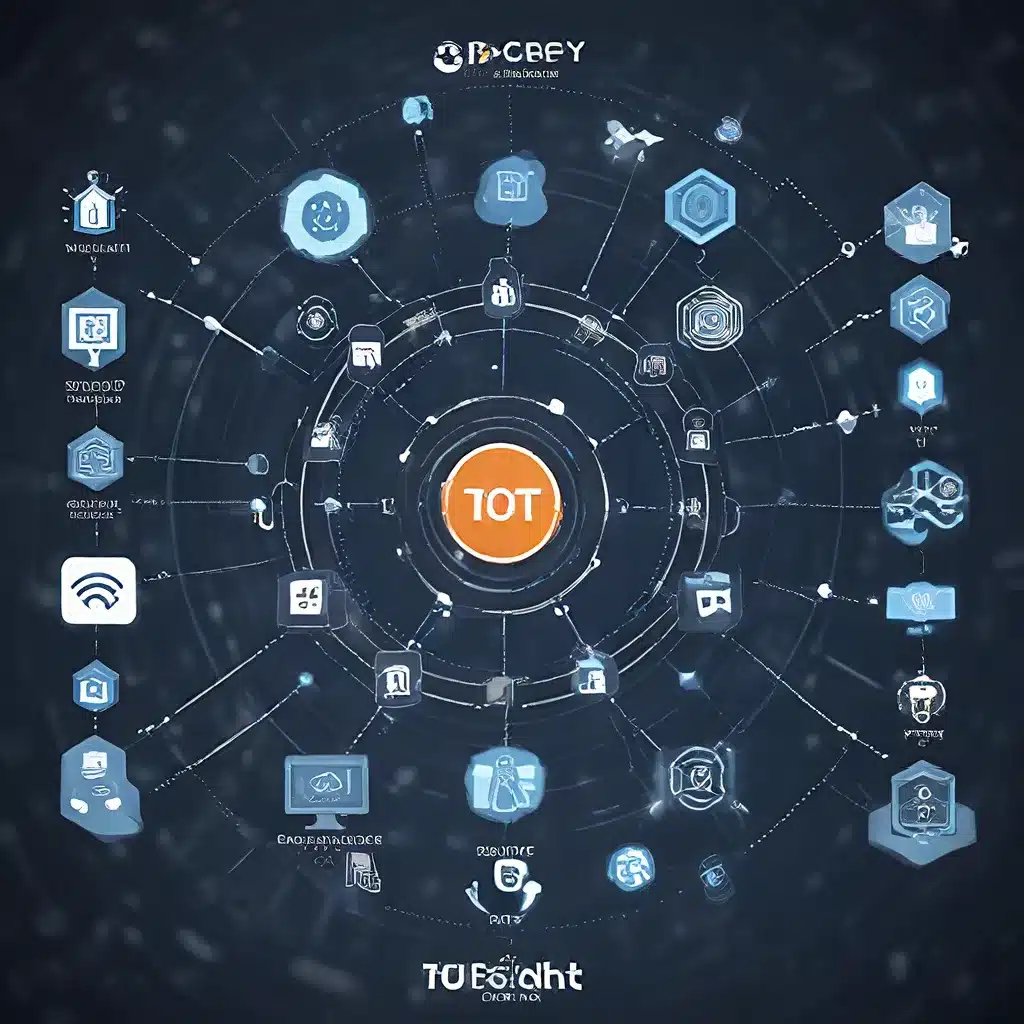
The Rise of the Internet of Things (IoT)
The Internet of Things (IoT) has revolutionized the way we interact with the world around us, ushering in a new era of ubiquitous connectivity and intelligent automation. This vast network of interconnected devices, sensors, and applications has transformed industries, empowered consumers, and paved the way for unprecedented data-driven insights and innovations.
As the IoT ecosystem continues to expand, with billions of devices now connected globally, the need for robust security measures has become increasingly crucial. IoT devices, by their very nature, often lack the robust security features found in traditional computing systems, making them vulnerable to a wide range of cyber threats. From unauthorized access and data breaches to device tampering and distributed denial-of-service (DDoS) attacks, the security challenges posed by the IoT landscape are multifaceted and constantly evolving.
Addressing the IoT Security Challenges
Securing the IoT ecosystem requires a holistic approach that encompasses a variety of tactics and tools, as well as considerations for adjacent systems such as networks. Three key capabilities for a robust IoT security solution are:
-
Comprehensive Visibility: Gaining a clear understanding of the connected devices and their associated vulnerabilities is the foundation for effective IoT security. Automated device identification and discovery tools are essential for mapping the complete asset inventory, including non-traditional assets like cloud, SaaS, IoT, and operational technology (OT) systems.
-
Continuous Monitoring and Risk Assessment: Monitoring the IoT environment for anomalies, threats, and vulnerabilities is critical to proactively identifying and mitigating security risks. Advanced analytics and AI-powered solutions can provide real-time insights into the cybersecurity posture of IoT devices and networks.
-
Automated Remediation: With the vast number of IoT devices and the pace of vulnerability discoveries, manual security management is often ineffective. Automated remediation capabilities, such as firmware updates, access control adjustments, and quarantine procedures, can enable swift and reliable responses to security incidents.
Securing the IoT Attack Surface
IoT devices are prime targets for various types of attacks, including malware infections, DDoS attacks, and unauthorized access. Cybercriminals often exploit the inherent vulnerabilities of these devices to gain a foothold in the network and launch more extensive attacks.
One of the most prevalent IoT-based attacks is the DDoS botnet. Botnets composed of compromised IoT devices have been responsible for some of the largest DDoS attacks in recent years, highlighting the need for robust IoT security measures. Securing IoT devices from unauthorized access is crucial to prevent them from becoming part of a botnet and contributing to these devastating attacks.
Regulatory Efforts and Industry Initiatives
In response to the growing IoT security challenges, governments and industry bodies have taken steps to address the issue. Notable examples include the IoT Cybersecurity Improvement Act of 2020 in the United States and the California IoT Security Law (SB 327), which aim to establish security standards and guidelines for IoT devices.
These regulatory initiatives have had a significant impact on IoT device manufacturers, incentivizing them to prioritize security in their product development and deployment processes. By setting minimum security requirements, these laws have helped to raise the overall security posture of the IoT ecosystem.
Emerging Technologies for IoT Security
Blockchain technology has emerged as a promising solution to address the security challenges in the IoT ecosystem. Blockchain’s decentralized, transparent, and tamper-proof nature can provide a robust security framework for IoT networks, enabling secure device authentication, access control, and data integrity.
By leveraging blockchain’s inherent properties, IoT devices can securely communicate and exchange data without relying on a central authority. This decentralized approach mitigates the risk of single points of failure and reduces the potential for data tampering or unauthorized access.
Integrating blockchain with other security technologies, such as encryption and secure hardware enclaves, can further enhance the overall security posture of IoT networks. This defense-in-depth approach can help public safety agencies and critical infrastructure operators safeguard their IoT ecosystems from a wide range of cyber threats.
Overcoming Challenges in Blockchain-Based IoT Security
While the potential of blockchain in IoT security is significant, there are several challenges that need to be addressed for widespread adoption. Scalability, energy efficiency, and interoperability are some of the key hurdles that researchers and developers are working to overcome.
Achieving scalable and efficient consensus mechanisms suitable for resource-constrained IoT devices is a critical challenge. Traditional blockchain consensus algorithms like Proof-of-Work (PoW) or Proof-of-Stake (PoS) may not be suitable due to their computational complexity and energy requirements. Alternative consensus mechanisms, such as Proof-of-Authority (PoA) or Practical Byzantine Fault Tolerance (PBFT), are being explored to address the specific requirements of IoT environments.
Seamless integration with existing IoT infrastructures and legacy systems is another significant hurdle. Ensuring interoperability and secure data exchange among heterogeneous IoT devices, networks, and security protocols requires collaboration among various stakeholders, including public safety agencies, IoT device manufacturers, and blockchain developers.
The Path Forward: Securing the IoT Ecosystem
As the IoT ecosystem continues to grow in complexity and importance, the need for robust security measures has never been more critical. Addressing the inherent vulnerabilities of IoT devices and mitigating the associated risks is a pressing challenge that requires a multifaceted approach.
By leveraging emerging technologies like blockchain, combined with other security solutions, public safety agencies and critical infrastructure operators can create a resilient and secure IoT ecosystem. This will not only enhance the protection of sensitive data and critical systems but also enable more efficient and effective emergency response operations, ultimately safeguarding the communities they serve.
The future of the IoT landscape hinges on the ability of stakeholders to overcome the security challenges through continuous innovation, standardization efforts, and collaborative partnerships. As the IoT ecosystem evolves, the security measures must also adapt and evolve to stay ahead of the ever-changing threat landscape, ensuring a safer, more connected, and more resilient world.
Visit sensor-networks.org to explore more insights and resources on the latest advancements in sensor network technologies and their impact on the IoT ecosystem.